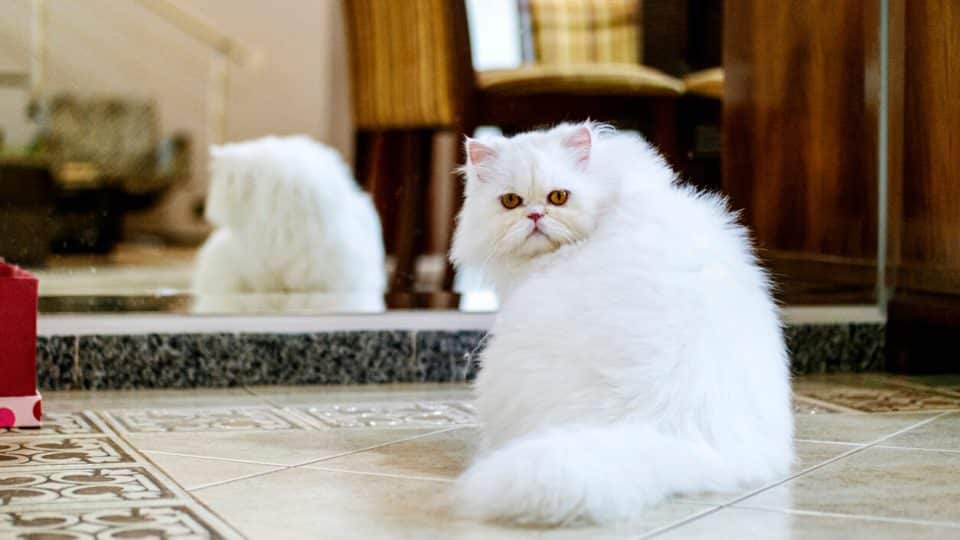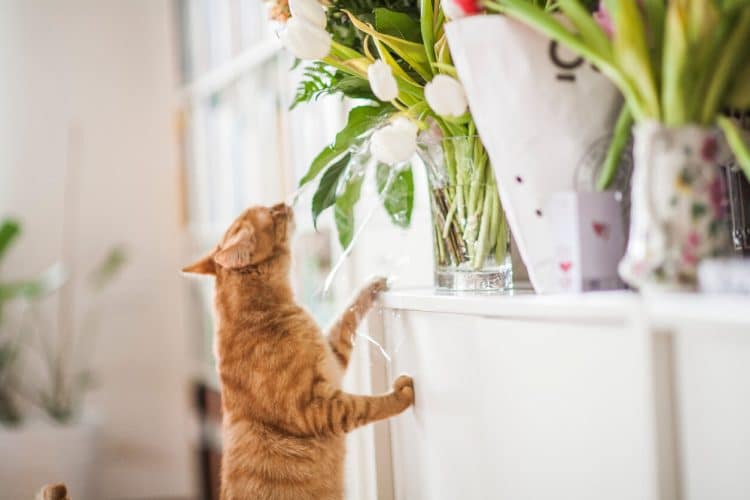If your cat’s eyes have suddenly become red, watery, and irritated, they could have conjunctivitis, also called pink eye.
Conjunctivitis in cats is very common. In fact, it’s the most common eye disorder in cats. This condition occurs when the conjunctiva becomes inflamed.
“The conjunctiva is the thin transparent tissue that lines the inside of the eyelid and covers the white part of the eye,” explains Shannon Barrett, DVM, house call veterinarian and owner of Fetch the Wave.
Conjunctivitis can have a number of root causes, but it’s highly treatable. Below, learn more about conjunctivitis in cats, including signs and contributing factors, and discover when it’s time to call your vet.
Signs Your Cat Has Conjunctivitis
Conjunctivitis usually starts out in one eye, but it can quickly spread to both. According to Dr Barrett, you might notice some of the following symptoms in one or both of your cat’s eyes.
- Discolouration. You may notice redness in the white part of your cat’s eyes.
- Light sensitivity. Conjunctivitis can leave your cat sensitive to bright lights, so you may catch them blinking or squinting often.
- Irritation or discomfort. Your cat may scratch or paw at their eyes.
- Discharge. Your cat’s eyes might ooze a watery or pus-like liquid.
What Causes Conjunctivitis In Cats?
Any cat can develop this condition—it’s not breed-specific, according to Dr Barrett.
That said, cats with flat faces, like Persians, might be more prone to certain kinds of conjunctivitis. “Their facial structure can predispose them to bacterial overgrowth and infection,” Dr Barrett says.
Kittens and younger cats may also have a greater chance of developing conjunctivitis.
All forms of conjunctivitis can cause similar symptoms, but they can have different underlying causes.
Viral conjunctivitis
The most common cause of conjunctivitis in cats is a viral condition called feline herpes virus 1 (FHV-1). Estimates suggest up to 97% of cats are exposed to this highly contagious virus at some point in life.
If your cat has the feline herpes virus, they will never clear the infection, but many cats actually have the feline herpes virus and live symptom-free, Dr Barrett says.
Stressful situations can weaken your cat’s immune system and activate the virus, which may, in turn, trigger conjunctivitis episodes in your cat.
Bacterial conjunctivitis
Bacterial infections could also trigger conjunctivitis. Two of the most common culprits include the chlamydia felis and Mycoplasma felis bacteria.
According to one study involving 40 cats with conjunctivitis, 25% of the cats had the mycoplasma bacteria present in their eyes.
Allergic conjunctivitis
Sometimes, substances like dust or mould spores may land in your cat’s eye and lead to allergic conjunctivitis.
Your cat may be more sensitive to allergens in the environment if they:
- Live with allergies (feline atopic dermatitis)
- Have a weakened immune system due to illness
Additionally, if your cat has food allergies, eating food that contains those allergens could trigger an outbreak. Some of the most common food allergies in cats include proteins, like chicken and fish.
How Do Vets Diagnose Conjunctivitis In Cats?
Conjunctivitis doesn’t have a specific diagnostic test. Instead, your vet will make a diagnosis based on a physical exam and your cat’s symptoms and medical history. In some cases, they may also run tests on scrapings from their conjunctiva or perform Schirmer tear tests or biopsies.
One trait that sets viral conjunctivitis apart from other subtypes is the presence of corneal ulceration. This is a sore in your cat’s outermost eye layer. To find corneal ulcerations, your vet might put a few fluorescein eye drops into your cat’s eye. These drops won’t hurt your cat, but they will make any ulcers visible.
How Do Vets Treat Conjunctivitis In Cats?
The best treatment method for your cat will depend on the root cause of their conjunctivitis.
- Viral conjunctivitis. Your vet may prescribe antiviral medications, but the infection will often clear up on its own within 10 to 14 days.
- Bacterial conjunctivitis. Your vet may prescribe an antibiotic, such as doxycycline, which is effective against some of the most common subtypes.
- Allergic conjunctivitis. Your vet will likely treat allergic conjunctivitis with eye drops or ointments that contain corticosteroids, like dexamethasone or hydrocortisone.
“Your cat will likely need a follow-up appointment before stopping the eye medications,” Dr Barrett says.
Your vet will give you specific instructions for using the medication, but it’s also essential to wash your hands thoroughly before putting drops in their eyes. Dr Barrett also suggests supporting your cat at home by wiping their eyes regularly with a clean, wet cloth.
Can conjunctivitis improve without treatment?
In some cases, conjunctivitis can resolve on its own without medication. But if your cat shows any symptoms, it’s wise to seek help from a vet as soon as possible.
Left untreated, conjunctivitis can lead to complications such as keratitis (inflammation of the cornea). It may also lead to vision loss in extreme cases, Dr Barrett says.
Additionally, conjunctivitis symptoms can also overlap with more serious eye conditions, including corneal ulcers, glaucoma, uveitis, and systemic viral infections, Dr Barrett says.
“If you notice increased redness, swelling, or discharge, or if your cat seems to be in pain, contact your vet immediately.”
Can You Prevent Conjunctivitis In Cats?
You can’t always prevent conjunctivitis from developing, especially if it relates to a bacterial or viral infection—but you can take a few steps to lower their risk:
- Help keep their stress low. Reducing stress in your cat’s daily life could help prevent FLH-1 from becoming active and triggering viral conjunctivitis. Stressful events—like new people or pets in the house, travelling pet parents, and construction sounds—can’t always be avoided. But it may help to introduce changes slowly, provide plenty of safe hiding spaces, and offer plenty of love and affection when they ask for it!
- Reduce allergens in their environment. If your cat has allergic conjunctivitis, eliminating allergens from your home could help prevent an episode of allergic conjunctivitis. A good first step involves asking your vet for an allergy test.
- Keep sick cats in kitty quarantine: Conjunctivitis is pretty contagious. If you have more than one cat, you’ll want to keep the cat with conjunctivitis in a room of their own until your vet gives the all clear—and wash your hands after petting, feeding, or playing with a sick cat.
If you suspect your cat may have conjunctivitis, it’s always best to reach out to a vet. Prompt treatment can ease your cat’s discomfort and help them get back to seeing the world clearly again all the sooner!





